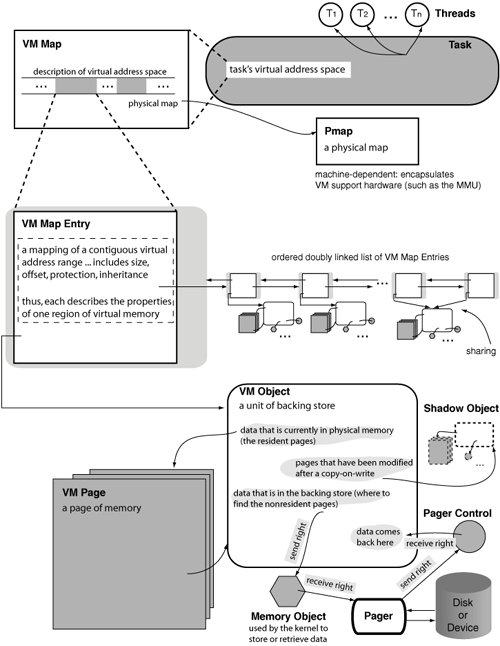

The inactive list contains pages that are currently resident in Memory is converted to Active memory, instead of loading Mail from the However, if you open Mail before its Inactive memory is used by aĭifferent application, Mail will open quicker because its Inactive
#Os x vm swapfile free#
This Inactive memory isĪvailable for use by another application, just like Free memory. Mail was using is marked as Inactive memory. This information in memory is not actively being used, but wasįor example, if you've been using Mail and then quit it, the RAM that However, the amount of "Inactive" ram is typically around 12.5%-25% of all available memory (^1.) when swapping starts/occurs/ends. Supposedly, this is due to swapping, since heavy disk activity is apparent and that vm_stat reports many pageouts. I put classic on this drives partition because I rarely use it so most of the time the drive is free to run as swap only.Ĭlassic, OS X, Users, swap all have their own partitions.A common phenomena in my day to day usage (and several other's according to various posts throughout the internet) of OS X, the system seems to become slow whenever there is no more "Free" memory available.
#Os x vm swapfile how to#
More info can be read here as well as a step by step how to guide it helps things run more efficiently so the speed gains are more in that you don't sit watching beachballs and system performance doesn't degrade while running a lot of apps. you won't see amazing speed changes that's not what this does.

this is why the swap should not be more than 500 meg any more than this would waste space and defeat the goal in addition the swap partition should not be used to save files to it is just for the swap. small partitions are easier for a drive to manage and are less prone to bad fragmentation.

this further helps because now the drive doesn't have to bounce around reading and writing. while this solution is fine better is 2 drives with the swap on a small partition on the secondary drive. as you can see with one drive setups a partition helps limit the area it has to look for the swap data in but the drive head still has to jump all over to read and write.

The reason you would use a separate drive is so that the swap is not competing with the other data to be read and written. Swap files are created in 80 meg file increments as needs get higher swap space increases in 80 megs increments. the system and your users space will no doubted get a lot of data read and written to it this combined with the data being written to the swap can slow things down. The reason you isolate it is when data is written to a drive it can fragment and cause the drive to thrash around looking to find this data. It should not be more than 500 meg anything larger and you are defeating the purpose of isolating it. If you plan to move your swap file the best location is a separate small drive or partition of a separate drive. the best solution is to not need to use the swap at all. NOTHING is better than a whole lot of real RAM. It uses disk space to page in and out data that ram doesn't have room for and does this with some intelligence lower priority things are what will swap first allowing things with higher priorities to get more of the real ram.


 0 kommentar(er)
0 kommentar(er)
